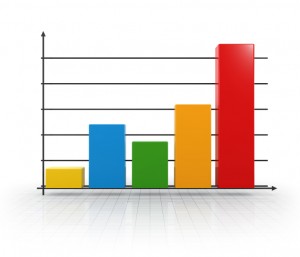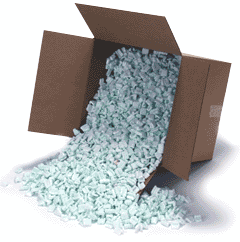
You know how you feel about your packaging. But, have you thought about how your customers feel about your packaging?
And does it even matter? Apparently - the answer is yes.
I ran across this really interesting study conducted by one of our vendors. The goal of the study was to measure consumer emotional response to different protective packaging mediums. While some of the results may not be surprising, some were and some are really good food for thought as you consider new packaging design or packaging redesign.
Methodology
Using 120 participants in a simulated "at home" environment, four different protective packaging mediums were tested: paper, peanuts, bubble, and air pillows.
With facial cameras positioned and ready to measure more than 40 facial muscles to determine human emotion on a 7 point scale, the research team was able to capture bio-metric readings, as well as both qualitative and quantitative data.
Participants were then tested with 5 key situations: opening, removing, disposal of the protective packaging, product protection, and impact of damage.
Key Findings
When it comes to opening a package, the main emotion experienced is excitement. But that emotion differs based on the protective packaging medium:
- About 50% of participants experienced excitement when opening a package filled with packaging peanuts, while over 70% experienced excitement with paper packaging. Bubble filler came in at about 55% while air pillows were about 62%.
- An interesting side note is that the rate of frustration with opening packaging with peanuts was nearly 20% of the participants, more than double (close to triple!) the frustration of opening any other protective packaging option.
Tasked with removing the product, inflatable packaging was viewed most favorably. And the frustration level with removing a product from peanuts was 10x greater than with any other protective medium; almost half of the respondents were frustrated, while only about 10% were excited to deal with packing peanuts (maybe those participants have kids who will love to play with them!).
With sustainability and "going green" so top of mind, the study asked participants about how they would dispose of the internal packaging to get an idea of how people view these individual mediums:
- 60% said they'd recycle the bubble
- 64% said they'd recycle the paper packaging
- 75% said they'd recycle the air pillows
- Less than half of the participants said they'd recycle the peanuts; this means that - at least in the customer's mind - these are the least green of the internal packaging options
But, it's all about protection during transport for customers: 80% of the respondents said that the protective characteristics of the packaging material were more important than anything else, including sustainability, ease of removal, or appearance.
And that's important to remember because receiving damaged items puts 73% of future orders at risk. Nearly 60% of respondent said they'd be somewhat unlikely to purchase from that same seller again if they received a damaged product.
What does it all mean?
So, you have the numbers, but what does it all really mean to you, as someone packaging products on a daily basis for shipping? Here are the major takeaways:
- Kids and pets may love them, but (and it's not really the biggest surprise) most customers do not like packing peanuts.
- The fight of "paper vs. plastic" seems to be dying out as there are more recycling options for both and customers are educated about the "greenness" of plastics today.
- Damage is the biggest threat to customer retention and product protection is the customer's biggest concern.
What this really means is that as a packer, you need to make sure you understand how to best protect your products. As packaging specialists, we can help you determine the best fit for your individual products.
With dedicated Account Managers, Product Specialists, and Packaging Engineers on our staff, we have the knowledge and experience to match the best protective packaging for your needs.
Whether you want green, protection, or something to make the customer excited to open your package, we can help you.
You just need to pick up the phone to start the process.








